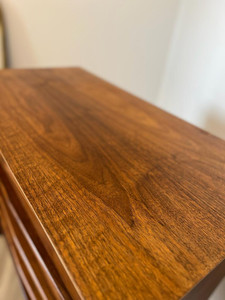Characteristics of Mid Century Furniture
- Ili Bianco

- Mar 13, 2024
- 2 min read
Many of the furniture that we see every day in interior decoration magazines are mid-century style, Mid Century begins in the middle of the 20th century between the 50s and 70s in Europe, and had a great impact in the Scandinavian countries, where they opted for a technological, functional, and at the same time affordable design Hence the Scandi or Nordic look.

In addition to having a contemporary aesthetic, often futuristic, and a great emphasis on function, which influenced this style to develop in interior, industrial and graphic design, as well as in architecture and urban planning, disciplines that make up the best example of mid-20th century modernity.
The purity of the lines, the use of natural materials or the sobriety of the color are some of the characteristics of this style. Each of the elements that are going to be included must have a reason, in order to avoid an overloaded environment, opting for the simplicity. Therefore, they avoided including unnecessary decorative elements and accessories.
Main characteristics:
A) Short legs: leaving behind those furniture stuck to the floor that were so uncomfortable to clean
B) Legs slightly inclined: “V-shaped, both in the case of the wooden and metal legs, with a finish known as ufo, iconic in Italian design
C)Light furniture
easy to move and transport.
D) Most of the veneers have beautiful wood grains and are mainly made of Teak, walnut or Rosewood, and carefully crafted for an attractive and welcoming design.
F) Low height furniture
G) Metal,sometimes includig this material which gives the impression of a retro aesthetic
Maximum Exponents
Richard Neutra (1892 – 1970)
Marcel Breuer (1902 – 1981)
Florence Knoll (1917 – 2019)
Eileen Gray (1878 – 1976)
Louis I. Kahn (1901- 1974)
John Lautner (1911 – 1994)


















Comments